If you found your way to this article, your car has a problem. Perhaps there is too much noise in the cabin or overheating. So, how can you properly and safely insulate your car and go about this problem once and for all?
You will need to get all the relevant materials first known as “Reflectix,” to insulate your car. Then, to make insulated window covers, cut some foam layers to the same shape as each of your windows. You may also layer on some carpet after cutting the material to the suitable form to make some incredibly warm window covers. This will keep the interior of your car warm while also giving you some privacy at night.
Read on to learn more about properly insulating your car with suitable materials.
What Are the Benefits of an Insulated Car?
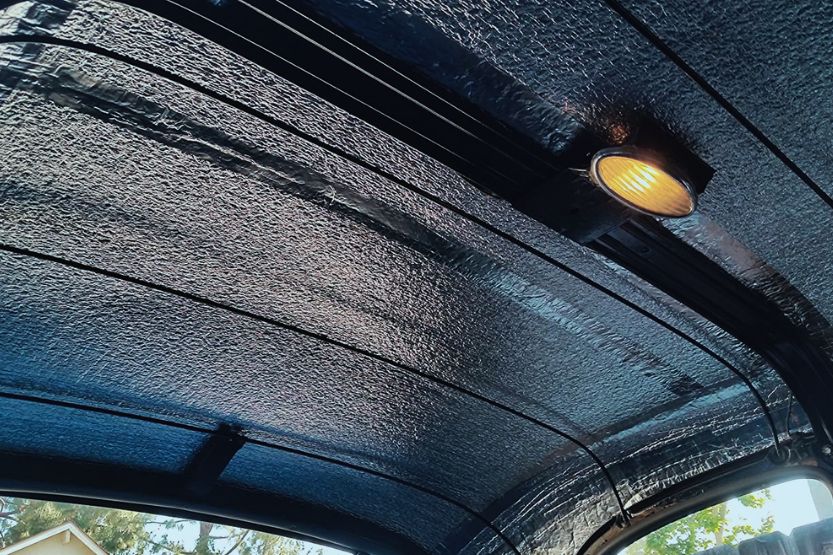
Reduce Vibrations and Noise Produced by Car
If you are anything like us, you always want to do things correctly. Getting proper car insulation is one of those things that will enormously pay off in the long run as it improves your quality of life, especially if you spend so much time in your car.
Lessen the Serious Effects of Overheating
Your car’s vibrations and noise over time can annoy you and others. Overheating can also have severe effects on your car, ranging from the evaporation of vital fluids to certain structural damage.
Boosts Comfort and Minimize Harm Due to Trapped Heat
Moreover, soundproofing a car using the right materials will certainly help a long way in eliminating all of the outside noise emissions while also boosting comfort and minimizing the harmful impacts of heat trapped in your car.
What Is ISOVER?
ISOVER has collaborated with the automotive industry for many years to produce cutting-edge car insulation solutions that improve your car’s acoustic and thermal efficiency.
They manufacture custom components for engines and driver compartments in collaboration with top automotive companies, based on your performance and space requirements.
Car Insulation vs. House Insulation
We should also add that car insulation is NOT the same as house insulation and that “R” values are not always a reliable measure of the effectiveness of automotive insulating materials. You can’t simply insulate your car with a foot or two of insulation like you usually would in your attic.
Insulated Car Guide: How Thick Should Your Car Insulation Be?
You can think of it like a bowl full of golf balls and another bowl full of beans. In the first case, you have dozens of golf balls with enormous air spaces between them, similar to what you’d find in a house.
Thousands of beans are packed together in the second case, with microscopic air gaps between them. This denser substance is similar to what you find in your car.
Generally speaking, the better the insulation, the thicker the material, but it must fit the space too. You will find insulation in the form of matting is very much available in various thickness levels such as 1/4-, 1/8-, and 1/2-inch.
1/2-inch material might fit under a roof or on the firewall, but 1/4-inch material will be ideal for the floor. So, you’ll need to draw out the car’s layout and decide how thick of a mat material to utilize in specific areas.
More Tips on How to Insulate Your Car Better
Calculate the Area
To calculate the area, multiply the height by the breadth, then divide that amount by 144 to get the area in square inches. There are, however, certain things you should keep in mind.
Early Roadster, Early Coupe, and Normal Muscle Car Insulation Requirements
For an early roadster, a 72 sq. ft. bulk pack or two 36 sq. ft. bulk packs are usually necessary. For an early coupe, three bulk packs are essential. A normal muscle car usually requires 144 square feet of insulation in various thicknesses.
Do Partial Dampening to Save Money
You can still get an adequate improvement by insulating at least 30% of any panel if you want to do partial dampening to save money on materials. This will help reduce the panel’s fundamental resonance vibration but will not mute outside noises.
Custom Fit Kits from Dynamat
You will have to place the insulation at the center of the panel, where there is the most dynamic motion and vibration. You would also need at least two square feet of Dynamat on a panel with a six-square-foot surface area.
Dynamat has developed several custom-fit kits, and it claims to be adding more every day. They’re computer-generated for cars like Camaros, Firebirds, Chevelles, muscle cars, sports cars, and Volkswagens.
The computer calculates and cuts each car’s designs and determines the required sizes and thicknesses.
You will drop a kit on the floor, peel off the adhesive coating, and glue the insulation in place.
Dynamat claims that at 70 mph, it can reduce cabin noise by up to 8%, or around 15 decimals.
DIY Car Insulation Materials That Works
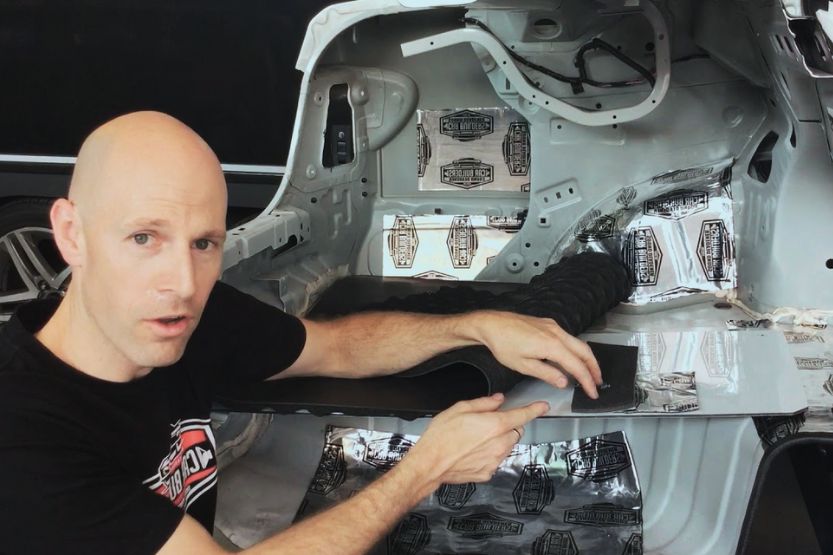
1. Polystyrene
Polystyrene is a low-cost, high-heat-retention insulating material. Bales are available in thicknesses ranging from 1/2 inch to 1 inch.
This allows you to fit sheets into tiny locations while filling all voids. This will enable you to fit sheets into tight spaces while also ensuring that you can fill all cavities.
The ideal technique to install sheets is to batten the area you wish to insulate. Then, cut with a saw to the exact size of the area between the batons. This should be quite easy to do.
Using strong construction glue, you can fasten batons to ribs on walls and ceilings or attach them.
2. Kingspan
Unlike polystyrene, it does not come in a wide range of thicknesses, making it good all-around insulation for bigger spaces.
Each sheet is made of a thick substance sandwiched between two reflective silver sheets, ideal for reflecting heat.
It’s also simple to cut with a bread knife. But, if you’re working with limited places, we don’t recommend using one.
Only use a bread knife if you are a patient person.
3. Polyurethane Foam
Self-build caravanners have long praised this method as the best insulation type.
Many companies offer a full van spray service, where you bring your vehicle into their shop, and they foam-fill every hole.
By so doing, you ensure that no humidity enters your car and that there are no holes. We should also add that this method can be expensive and restricting if you need to run wiring or piping.
4. Glass Fiber Insulation
Rock wool and other glass fiber insulators are commonly used and moderately priced, allowing you to pack cavities with wool to ensure good heat retention.
The sole disadvantage of glass fiber is that it does not repel moisture and, depending on your location, may emit a small odor.
5. Hemp, Fleece, or Ecowool
These types of insulation are good at holding heat and are healthy for the environment. Natural insulators, on the other hand, might be quite costly.
Do not forget that mice love organic materials. So, unless you securely seal the insulated area, you may have unwanted visitors nibbling at your expensive insulation.
Any of the insulators listed above will keep you warm during the winter. Note that the density of the materials and how well you seal your automobile can impact the temperature inside.
You will also need to ventilate your car regularly to allow for proper air circulation.
Before putting insulation in your car, think about how you will ventilate it, especially if your car does not have any skylight or something.
Again, how to insulate your car with ease? To insulate your car, you can buy Reflectix or use other insulating materials, such as polystyrene, Kingspan, polyurethane foam, etc.
How to Use Liners to Insulate the Areas Below the Car’s Panels
1. Remove the Car’s Panels
Remove your car’s panels and lay an adhesive liner beneath them. Again, do not attempt to remove the panels if you are not confident in your ability to do so.
2. Remove the Factory-installed Insulation
Carefully remove the factory-installed insulation if you think it is in bad shape. This may require a removal kit, such as the Manfiter 38-piece kit. This one includes everything you need to remove the paneling without damaging your vehicle.
3. Clean the Area
Clean the area once it is clear. Most common household degreasers will do just fine for this thing. You can use rubbing alcohol or something similar to remove minor buildup.
4. Dry the Area Properly
Before putting the Noico liner, ensure that the area is completely dry, no matter what cleaning method you choose. Remember not to rush things. If you do it quickly, the wetness will damage the liner.
5. Measure and Cut the Right Size of the Adhesive Liner
Noico RED is self-adhesive closed-cell polyethylene foam. It comes in sheets and is simple to install. Now, remember that you should decide where you want to insulate your car first before you start. You’ll want to insulate the inside floor, doors, and maybe the roof for heating purposes.
You will need to measure and cut the right size, just like Reflectix. To be safe, you can repeat the measurement process several times.
6. Remove the Release Paper
Once you’ve finished cutting your pieces, remove the release paper off the back of the Noico liner.
7. Press the Liner Down Firmly
You will now want to put the item in your car. To ensure adherence, make sure to press it down firmly. Also, double-check that the liner is free of bubbles.
When you replace the panels of your car, you will have concealed insulation that keeps your car toasty!
How to Insulate a Car When It Is Too Damp
As a general rule of thumb, you can regulate dampness but can not always fully eliminate it. Polyurethane foam is best since it fills all voids and makes complete contact with your car’s walls.
Installing a wood stove or a dry air heater will also help keep clothing and bedding from becoming moldy.
In the summer, use reflective insulation to help keep the heat out of your vehicle, especially if you live in a hot climate or will be traveling in one.
Consider moisture, heat, location, price, and environmental impact when choosing your insulation.
Go over them one by one, and you will be able to pick the optimum insulation for your car.
FAQs

What Exactly Is Car Insulation?
Car insulation is a term that refers to certain materials that help keep temperature transfer to a minimum. You should not confuse it with sound deadening and resonance suppression products.
Why Isn’t My Car Insulated to Keep Warm in the Winter and Cool in the summer?
Many cars are ostensibly insulated. In most cases, all you will see when you remove the door panel of your car is a thin plastic covering and a sheet metal. Also, consider how insulation will affect the weight of your car.
Generally, it is not much of a deal, but it could cause some issues when looking at fuel economy, let alone pricing.
Consider the extra costs of adding highly specialized features, such as installing insulating panels within the floorboards, doors, and under the back seats, among other things.
Because your car will be exposed to the elements for extended periods without being air-conditioned or heated, the temperature is unlikely to fluctuate greatly. But, greater insulation would always make your car sound much more solid.
How Can You Cover up the Insulation Once You’re Done?
Depending on the intended use, you can either put a lining over the insulation to protect it or take it a step further and convert your car into a camper to keep it high-duty. If you only cover the insulation, any type of lining would be fine.
However, if you know you will step on it, you will need to protect it with a layer of plywood over Celotex and batons.
Some matting systems come with a hardwearing covering, and you can use them on their own. But, because they are matting systems, they will have joints, which means moisture can get below.
Spray-on insulation is your best bet for a van floor. You can, for example, place LizardSkin over a rustproofing primer and top-coat it.
There are no seams on the floor, and they can be coated with a hardwearing coating like “Upol Raptor Bedliner.” So, you may insulate the floor, make it durable, paint it any color you like, and wash it as needed.
How Much Space Does It Take to Insulate a Car?
If you drive a car regularly, you are certainly well aware of the value of space. Depending on the type of insulation you’re working with, it can take up a lot of room. Moreover, while cheap insulation methods will save you money, they will also take up more space.
Because spray-on insulation is molded to your car, it saves space most effectively. While more expensive than standard insulation like foam boards, it will add ceramic and other substances to boost its efficiency at a given thickness.
Lizardskin Insulation, for example, is only 1mm thick yet can give a temperature difference of up to 30 degrees Fahrenheit.
How Much Does Car Insulation Cost?
Money is always a big concern, of course. If you’re on a limited budget, things like foil-backed bubble wrap and Celotex can do the trick.
However, while these two provide relatively good insulation, they won’t always be a good choice thanks to their low efficiency and inclination to create moisture over time.
Plus, Celotex is not flexible, so saving money here can result in a lot of wasted space, and correctly sealing the panels to the car to avoid rust and moisture can be very expensive and complicated.
When estimating the cost of insulation for your project, consider the whole cost and potential side effects.
Furthermore, purchasing boards that require expensive tape for sealing or matting systems that require two or more goods and preparing materials can add more expenses in the long run.
Conclusion – Insulated Car Guide
That is all there is to it! To insulate your car, you will want to buy special insulation material, known as Reflectix, and then cut the foam to match the shape of your car windows.
After cutting the material to the appropriate form, you may pile on some carpet to make some excellent window covers. This will help keep your car warm while offering privacy at night.
Rest assured, all of this effort will pay off in the end as you enjoy a new level of comfort!

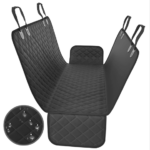
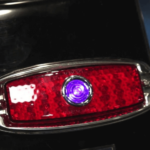


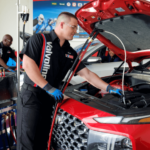

![Read more about the article Car Having Trouble Starting [Causes and How to Fix]](https://roadsumo.com/wp-content/uploads/2021/09/car-having-trouble-starting-300x200.jpg)

